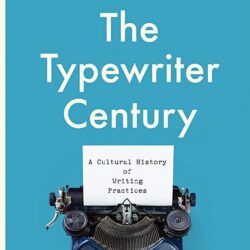Descriptive Bibliography embodies G. Thomas Tanselle’s lifelong dedication and significant, enviable contributions to the discipline; and its content amounts to a cornucopia of bibliographical delights for those seeking to learn, reinforce or revisit what descriptive bibliography is and its “role as history and biography” (page 28), such as from aspiring higher-degree students, early- to mid-career scholars, to researchers from adjacent disciplines, such as library cataloguing, whose work exists tangentially to, or intermixes with, that of bibliographers. The book’s objective to “offer a comprehensive guide to descriptive bibliography” (page ix), though limited to printed books, is without doubt (and, given the author, predictably) achieved.
Category: Book review
Stephen Orgel, Wit’s Treasury: Renaissance England and the Classics.
If there are any preconceived notions of a poet who refrains from sassy defamation of a critic or an academic who manages not to say something controversial, Wit’s Treasury shatters such notions. At the heart of the book is the organic development of the understanding and appreciation of literary classics, many of them appearing as various translations throughout the Jacobean and Elizabethan periods and beyond. The book gives special attention to adaptations of the classics rendered as poetry, dramatic performance, and other written and visual modes of art. Not only were the classics, such as the narrative and philosophical writings of the ancient Greeks and Romans, translated in ever-more-updated editions with plentiful illustrations, produced for the elite and popular culture, but the trappings, the settings, and the aesthetics of “the classics” also rubbed off on the books and plays of the whole Renaissance.
Alberto Gabriele. The Emergence of Pre-Cinema: Print Culture and the Optical Toy of the Literary Imagination.
The Emergence of Pre-Cinema is a genealogical study that traces the dispersed history of self-reflexivity and fragmentation in the context of nineteenth century culture and print-based literary forms. The aim is to observe these phenomena in relation to their past and their future, from Baroque precursors through the twentieth-century avant-garde, beyond national borders or a predetermined periodization. The optical toys such as flipbooks or thaumatropes that the author references in the subtitle of his book draw attention to the sense of vision, subjective modes of perception, movement, and temporality. Gabriele is interested in visualizations within literary texts such as montage-like, fragmentary forms of writing by Friedrich Schlegel or cartographic imagination and panoramic descriptions of Italian landscape in painterly writing by Ann Radcliffe, for example. These multisensory and multidirectional “visions mediated by the technology of print culture” are prescient at times or contemporaneous with the technologies of early cinema. Gabriele is intent on acknowledging their long history side by side and in contrast to linear, often technologically determined narratives surrounding the invention of optical devices and the history of cinema.
Martyn Lyons. The Typewriter Century: A Cultural History of Writing Practice. University of Toronto Press, 2021.
Martyn Lyons’s The Typewriter Century, A Cultural History of Writing Practices takes the machine as a starting point to examine its relationship to work, creative and otherwise and, like Hazzard’s novel, finds a complex network of relationships that it creates or facilitates. This social and literary history is interspersed with reckonings on gender and labour as Lyons considers the technical, personal and even mythical roles that the typewriter played in offices, homes and imaginations for most of the twentieth century.
Lesser, Zachary. Ghosts, Holes, Rips and Scrapes: Shakespeare in 1619, Bibliography in the Longue Durée. Philadelphia: University of Pennsylvania Press, 2021.
The central methodological claim of Lesser’s case study is that an attention to the long and disparate lives of each individual copy helps us to better understand the making of the Jaggard Quartos and allows us to complicate the studies conducted by New Bibliographers, whose bibliographic descriptions and attendant explanations of the texts’ extant forms still condition contemporary approaches to bibliography. By carefully studying individual copies across long periods of time, Lesser provides a fuller picture of the material conditions of their production and use.





